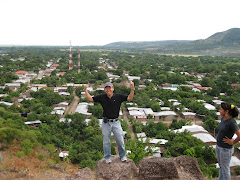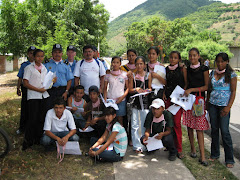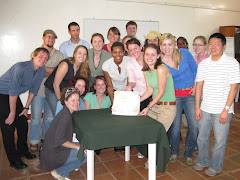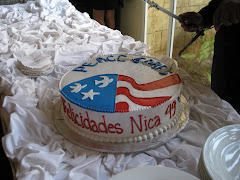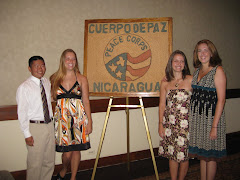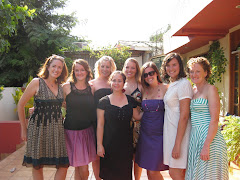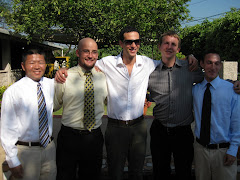Wednesday, March 19, 2014
"Am I Good Enough? The Impact of Adoption on Self-Esteem"
I will be a webinar panelist for the following webinar series offered by Children's Home Society of Minnesota and Lutheran Social Service of Minnesota: http://www.chsfs.org/fromourvoicesadoptedadultwebinarseries
Below is my blog post/thoughts on the webinar next month:
As an international adoptee, growing-up in Minnesota was difficult. Not only did I deal with the “normal” teasing, jealousy, and social awkwardness most children encounter during their childhood; I also encountered prejudice based on my ethnicity and physical traits. I was told my feet were too small or got mocked because of my “slanted, Asian-eyes”. Dealing with this prejudice impacted me and how I manage conflict today. It helped me develop a resiliency and fortitude that forms a part of my identity.
Learning how to resolve conflict is difficult. Knowing how teasing affects our self-esteem [as adoptees] helps us accept ourselves for who we are and allows for healthier relationships with others. What is self-criticism? What is self-acceptance? Do we internalize teasing? What repercussions might internalization of the effects of teasing have on our self-esteem? Teasing, identity and self-esteem are topics that are universal; they affect all human beings. Regardless of ethnicity, race, social or economic class, gender, whether we are orphans, adoptees, or have siblings, self-esteem is fundamental to who we are and what we become. Let us never forget our uniqueness as individuals. Let us embrace difference and diversity and become a society characterized by acceptance and inclusion.
Tuesday, January 17, 2012
The Peace Corps kids are all right
The Peace Corps kids are all right
I whole heartily agree with this young PCV who is now serving in Guatemala.
I whole heartily agree with this young PCV who is now serving in Guatemala.
Thursday, January 12, 2012
Wednesday, May 11, 2011
My Border Awareness Experience
I am posting an article I wrote for my local neighborhood newspaper the summer of 2008. After graduating with my degree in biology and minor in philosophy from Colorado College I participated in a very neat border immersion experience on the Mexican/US border with my college catholic community members. Below are my insights and observations as well as thoughts on sustainability and border issues! Enjoy!
FOR THE HILL AND LAKE PRESS
“A Border Awareness Experience: Solidarity and Sustainability on the Border”
By Nicholas K. Halbert
Nick has been a resident of the CIDNA Neighborhood since March 1989. He graduated from Benilde-St. Margaret’s High School in June 2004. On May 19, 2008, he received the degree of Bachelors of Arts from Colorado College. Nick majored in Biology, minored in Philosophy and successfully completed the Pre-Medicine requirements.
From May 31 to June 6, 2008, Nick and three of his peers from the Catholic ministry program at Colorado College and UCCS (University of Colorado at Colorado Springs) and the director of social concerns for Catholic Charities participated in a B.A.E. – Border Awareness Experience, an educational immersion program conducted by the Women’s Intercultural Center in Anthony, New Mexico, http://www.womensinterculturalcenter.org/bae/bae.htm. Nick wanted to share some of his observations from the trip with you.
************
During my trip to the U.S.-Mexico border, I learned about support systems that help immigrants. I learned about globalization, NAFTA - North American Free Trade Agreement, and their effects on the socio-political and economic inequalities immigrants and people living along the border face every day. In addition, I learned all of the aforementioned while consciously viewing the issues from a moral and religious perspective. My motivation for going on this B.A.E. was two-fold. First, I wanted to be immersed in the unique and vibrant border culture, which is found on either side of the Rio Grande. Also, I wanted to become a well-informed advocate for social justice and human rights issues that exist along our border.
A few take home observations I found important from my trip were in regards to the women in Juarez, sustainability, the environment and our future as an evolving species. For me, the most educational and valuable part of the B.A.E. were the two nights spent in a colonia in Juarez, Mexico. A colonia is a rural, unincorporated settlement along the border, which is economically disparate, having an underdeveloped infrastructure.
While in Juarez, Mexico, I had great admiration for the women of our host families. They unmistakably displayed a gracious and non self-righteous mentality. This mentality was an inherent part of their Mexican culture, something, which focused on the creation of personal interactions driven by relationships. With the support of the Women’s Intercultural Center, these women have defied traditional patriarchal gender roles and have become independent, self-minded, well-educated and emotionally and psychologically strong with a sense of high self-worth.
Another admiration for the good people living in the colonia in Juarez was their concern for the environment and living a sustainable lifestyle. One of the first social roles of the women in this colonia was the creation and installation of ecological toilets in their homes, many of which had no running water. The idea of the ecological toilet is to provide sanitation for the inhabitants of a colonia, which does not have a reliable sewer or septic system. The ecological toilet does not need running water to function and is environmentally safe and healthy.
Another sustainable practice involved the re-use of water. These same humble, simple and wise people are learning to re-use water – in a land where with luck, rainfall occurs only two months of the year. The women in the colonia developed flower pots and gardens outside their women’s center and around their own homes, which could filter water. Common places for naturally filtering plant boxes would be at the outlet for sink water, the washing machine, or the base of the rainwater runoff from the roof. These plant containers have a carbon-based filtering system embedded at the bottom. This allows dirty water to be filtered naturally, through the soil and roots of the plants as well as synthetically, through carbon films. At the end of the filter system there is an in-ground concrete catch-box that gathers the water for re-use.
This border immersion experience has made me aware of the economic inequalities and disparities in human dignity that exist between two populaces separated by an artificial boundary/border. Furthermore, it has given me great admiration for the good people in the colonias such as the women of our host families. People, who economically have so little in comparison to the majority of their neighbors to the north, and yet, are able to genuinely appreciate the little they do have, by respecting each other and their environment, in a sustainable fashion. It is this idea of sustainability and the notion of interconnectedness in our environment that I hope will be a unifying principle for current and future generations.
In conclusion, I remain hopeful that one day the U.S.-Mexico border will be a place of true solidarity instead of a place of disunity, inequality and hardship. In ridding myself of self-righteous and willful thoughts and by turning within, I hope to find a universal Spirit, a Spirit that dwells within all human beings and derives the hopeful realization that, ‘what we do to others, we are doing to ourselves.’ Only when we as Americans can unite with all human peoples of the globe and strive for this end goal with all of God’s creation – humans, the environment, and all other organisms – shall we willfully declare progress, sustainability and solidarity in this world.
FOR THE HILL AND LAKE PRESS
“A Border Awareness Experience: Solidarity and Sustainability on the Border”
By Nicholas K. Halbert
Nick has been a resident of the CIDNA Neighborhood since March 1989. He graduated from Benilde-St. Margaret’s High School in June 2004. On May 19, 2008, he received the degree of Bachelors of Arts from Colorado College. Nick majored in Biology, minored in Philosophy and successfully completed the Pre-Medicine requirements.
From May 31 to June 6, 2008, Nick and three of his peers from the Catholic ministry program at Colorado College and UCCS (University of Colorado at Colorado Springs) and the director of social concerns for Catholic Charities participated in a B.A.E. – Border Awareness Experience, an educational immersion program conducted by the Women’s Intercultural Center in Anthony, New Mexico, http://www.womensinterculturalcenter.org/bae/bae.htm. Nick wanted to share some of his observations from the trip with you.
************
During my trip to the U.S.-Mexico border, I learned about support systems that help immigrants. I learned about globalization, NAFTA - North American Free Trade Agreement, and their effects on the socio-political and economic inequalities immigrants and people living along the border face every day. In addition, I learned all of the aforementioned while consciously viewing the issues from a moral and religious perspective. My motivation for going on this B.A.E. was two-fold. First, I wanted to be immersed in the unique and vibrant border culture, which is found on either side of the Rio Grande. Also, I wanted to become a well-informed advocate for social justice and human rights issues that exist along our border.
A few take home observations I found important from my trip were in regards to the women in Juarez, sustainability, the environment and our future as an evolving species. For me, the most educational and valuable part of the B.A.E. were the two nights spent in a colonia in Juarez, Mexico. A colonia is a rural, unincorporated settlement along the border, which is economically disparate, having an underdeveloped infrastructure.
While in Juarez, Mexico, I had great admiration for the women of our host families. They unmistakably displayed a gracious and non self-righteous mentality. This mentality was an inherent part of their Mexican culture, something, which focused on the creation of personal interactions driven by relationships. With the support of the Women’s Intercultural Center, these women have defied traditional patriarchal gender roles and have become independent, self-minded, well-educated and emotionally and psychologically strong with a sense of high self-worth.
Another admiration for the good people living in the colonia in Juarez was their concern for the environment and living a sustainable lifestyle. One of the first social roles of the women in this colonia was the creation and installation of ecological toilets in their homes, many of which had no running water. The idea of the ecological toilet is to provide sanitation for the inhabitants of a colonia, which does not have a reliable sewer or septic system. The ecological toilet does not need running water to function and is environmentally safe and healthy.
Another sustainable practice involved the re-use of water. These same humble, simple and wise people are learning to re-use water – in a land where with luck, rainfall occurs only two months of the year. The women in the colonia developed flower pots and gardens outside their women’s center and around their own homes, which could filter water. Common places for naturally filtering plant boxes would be at the outlet for sink water, the washing machine, or the base of the rainwater runoff from the roof. These plant containers have a carbon-based filtering system embedded at the bottom. This allows dirty water to be filtered naturally, through the soil and roots of the plants as well as synthetically, through carbon films. At the end of the filter system there is an in-ground concrete catch-box that gathers the water for re-use.
This border immersion experience has made me aware of the economic inequalities and disparities in human dignity that exist between two populaces separated by an artificial boundary/border. Furthermore, it has given me great admiration for the good people in the colonias such as the women of our host families. People, who economically have so little in comparison to the majority of their neighbors to the north, and yet, are able to genuinely appreciate the little they do have, by respecting each other and their environment, in a sustainable fashion. It is this idea of sustainability and the notion of interconnectedness in our environment that I hope will be a unifying principle for current and future generations.
In conclusion, I remain hopeful that one day the U.S.-Mexico border will be a place of true solidarity instead of a place of disunity, inequality and hardship. In ridding myself of self-righteous and willful thoughts and by turning within, I hope to find a universal Spirit, a Spirit that dwells within all human beings and derives the hopeful realization that, ‘what we do to others, we are doing to ourselves.’ Only when we as Americans can unite with all human peoples of the globe and strive for this end goal with all of God’s creation – humans, the environment, and all other organisms – shall we willfully declare progress, sustainability and solidarity in this world.
Sunday, November 28, 2010
Happy Thanksgiving!
Happy belated Thanksgiving and Black Friday to all my faithful blog readers! I hope all of my fellow patriots enjoyed a lot of turkey and gave thanks for all the gifts that we are fortunate to have including the basics of food, home and a loving family. I took a bit of a respite for a few months from my blog but I feel the thanksgiving break is a good time to resume adding blog entries for the last 4 months of service! Wow, the two years and three months of PST have flown by and now before I know it I will be in the reintegration process in the states trying to define myself as a professional looking to begin a career or perhaps post graduate study.
Thanksgiving is an American holiday so here in Peace Corps Nicaragua we volunteers find ways to give thanks and enjoy our mutual company by getting together in Nicaragua our home away from home. Last year 20 other Peace Corps volunteers and I enjoyed a great dinner with the deputy ambassador to Nicaragua at his lovely home in Managua where the embassy families live. This year I got together with about 10 other volunteers in a province that borders Honduras called Jinotega. This was an exciting experience for me because I had never been to this town before. It was a potluck affair where everyone brought a drink or dish to share. We ate ourselves silly with stuffing, pork loin, rotisserie chicken, chili, corn bread, green beans, salad, and more. We all stood in a circle before feasting and shared with each other what we are thankful for. I am thankful that I have completed 19 months of service in San Isidro and 3 months of training in Sta. Teresa, Carazo in good health and safely without getting robbed. I am also thankful for my fellow Peace Corps volunteers and my host families in San Isidro and Sta. Teresa who provide the emotional support that has helped me get through the 22 months while being in country. I am also very thankful for the support of my parents who were generous and gracious in buying my plane ticket home to spend the holiday season and ring in 2011 with them and the rest of my family and friends in Minneapolis!
I am sure most of you are wondering how my work has been going in the past months. I have been keeping fairly occupied and will be putting pictures of what I have been doing in my facebook page and in my Picasa web album. In July, the “comedor infantil” was inaugurated and open to “business”. I was included in this inauguration ceremony, the only inauguration ceremony that I have been included in during my service here in Nicaragua. It was quite interesting with the national television news channel there as well as the mayor, vice-mayor, and other important political figures. I was involved in the ceremony because I had been actively involved in the planning process for this “home” that provides lunch, tutoring and homework help, as well as life skills classes for the poorest most vulnerable children ages 6 to 13 and for their single mothers. I specifically have helped with tutoring the children as well as giving them basic lessons on personal hygiene, malaria and dengue, nutrition, the environment, etc.. In addition I have given like skills lessons to the single mothers in hygiene and birth control.
There was a “leptospirosis” outbreak here in Nicaragua with 19 deaths and 520 positive cases of people sick from the bacteria called leptosira. These bacteria can get into the water supply and infect people who drink, bathe or cook with the contaminated water. The main vector transmitter of these bacteria is rats, mice, dogs, cats, cows and other domestic animals whose urine is infected with leptospira. So as a health promoter, the health center had me helping nurses and doctors go house to house handing out prophylactic antibiotics to help prevent the further spread of leptospira in humans. We gave the prophylactic antibiotics mainly to the rural communities; as a result I have gotten to know about 30 of 42 rural communities that are in the city limits of the municipality of San Isidro.
Lastly, I learned a great, albeit disheartening lesson about international development. Peace Corps had a workshop on HIV/aids for health volunteers in my group and their counterparts with whom they work on a regular basis. In this workshop I was fortunate enough to meet a representative of an NGO that works in AIDS education and prevention. His regional office is in Ocotal, a town about 30 km from the Honduran border; about a 2 to 3 hour ride on the Pan-American Highway from my site. He and I coordinated two workshops on HIV/aids prevention and homophobia for the taxi drivers and the adults from the gay community in my site. I printed 75 formal invitations with the Peace Corps logo and the logo of the NGO thinking that with a paper invitation there would be a better chance of having a good turnout. Unfortunately none of the taxi drivers, not one, showed up and only about 8 participants from the sexually diverse community showed up to their session. This was a little upsetting for me to see that it is difficult to promote HIV/aids education with the adult male population but it is a reality to face and a challenge for all of us to take upon ourselves and try to overcome.
I always like to end my experiences on a positive note. International development work might be challenging when talking in terms of Aids education with men, but in terms of trees and Marango (moringa oleifera) and working with elementary students, development work is easy and it is always exciting when one can see their results. I will post on facebook as well on this blog page a few pictures of the trees that I planted with the students of 6th grade in the backyard of the public elementary school. To remind you readers from the previous blog this tree Marango, is a great tool to combat global malnutrition because the dried or fresh leaves on the adult tree can be harvested and integrated in to recipes. These leaves have immense nutritional value such as 7 times the vitamin C than 1 gram of an orange, 3 times more potassium than a banana, 4 times as much calcium than in milk, 2 times as much protein than in milk and 4 times as much vitamin A than in a carrot.
That is all for this year 2010, and hope all my readers have a great Holiday season and a blessed new year!
Thanksgiving is an American holiday so here in Peace Corps Nicaragua we volunteers find ways to give thanks and enjoy our mutual company by getting together in Nicaragua our home away from home. Last year 20 other Peace Corps volunteers and I enjoyed a great dinner with the deputy ambassador to Nicaragua at his lovely home in Managua where the embassy families live. This year I got together with about 10 other volunteers in a province that borders Honduras called Jinotega. This was an exciting experience for me because I had never been to this town before. It was a potluck affair where everyone brought a drink or dish to share. We ate ourselves silly with stuffing, pork loin, rotisserie chicken, chili, corn bread, green beans, salad, and more. We all stood in a circle before feasting and shared with each other what we are thankful for. I am thankful that I have completed 19 months of service in San Isidro and 3 months of training in Sta. Teresa, Carazo in good health and safely without getting robbed. I am also thankful for my fellow Peace Corps volunteers and my host families in San Isidro and Sta. Teresa who provide the emotional support that has helped me get through the 22 months while being in country. I am also very thankful for the support of my parents who were generous and gracious in buying my plane ticket home to spend the holiday season and ring in 2011 with them and the rest of my family and friends in Minneapolis!
I am sure most of you are wondering how my work has been going in the past months. I have been keeping fairly occupied and will be putting pictures of what I have been doing in my facebook page and in my Picasa web album. In July, the “comedor infantil” was inaugurated and open to “business”. I was included in this inauguration ceremony, the only inauguration ceremony that I have been included in during my service here in Nicaragua. It was quite interesting with the national television news channel there as well as the mayor, vice-mayor, and other important political figures. I was involved in the ceremony because I had been actively involved in the planning process for this “home” that provides lunch, tutoring and homework help, as well as life skills classes for the poorest most vulnerable children ages 6 to 13 and for their single mothers. I specifically have helped with tutoring the children as well as giving them basic lessons on personal hygiene, malaria and dengue, nutrition, the environment, etc.. In addition I have given like skills lessons to the single mothers in hygiene and birth control.
There was a “leptospirosis” outbreak here in Nicaragua with 19 deaths and 520 positive cases of people sick from the bacteria called leptosira. These bacteria can get into the water supply and infect people who drink, bathe or cook with the contaminated water. The main vector transmitter of these bacteria is rats, mice, dogs, cats, cows and other domestic animals whose urine is infected with leptospira. So as a health promoter, the health center had me helping nurses and doctors go house to house handing out prophylactic antibiotics to help prevent the further spread of leptospira in humans. We gave the prophylactic antibiotics mainly to the rural communities; as a result I have gotten to know about 30 of 42 rural communities that are in the city limits of the municipality of San Isidro.
Lastly, I learned a great, albeit disheartening lesson about international development. Peace Corps had a workshop on HIV/aids for health volunteers in my group and their counterparts with whom they work on a regular basis. In this workshop I was fortunate enough to meet a representative of an NGO that works in AIDS education and prevention. His regional office is in Ocotal, a town about 30 km from the Honduran border; about a 2 to 3 hour ride on the Pan-American Highway from my site. He and I coordinated two workshops on HIV/aids prevention and homophobia for the taxi drivers and the adults from the gay community in my site. I printed 75 formal invitations with the Peace Corps logo and the logo of the NGO thinking that with a paper invitation there would be a better chance of having a good turnout. Unfortunately none of the taxi drivers, not one, showed up and only about 8 participants from the sexually diverse community showed up to their session. This was a little upsetting for me to see that it is difficult to promote HIV/aids education with the adult male population but it is a reality to face and a challenge for all of us to take upon ourselves and try to overcome.
I always like to end my experiences on a positive note. International development work might be challenging when talking in terms of Aids education with men, but in terms of trees and Marango (moringa oleifera) and working with elementary students, development work is easy and it is always exciting when one can see their results. I will post on facebook as well on this blog page a few pictures of the trees that I planted with the students of 6th grade in the backyard of the public elementary school. To remind you readers from the previous blog this tree Marango, is a great tool to combat global malnutrition because the dried or fresh leaves on the adult tree can be harvested and integrated in to recipes. These leaves have immense nutritional value such as 7 times the vitamin C than 1 gram of an orange, 3 times more potassium than a banana, 4 times as much calcium than in milk, 2 times as much protein than in milk and 4 times as much vitamin A than in a carrot.
That is all for this year 2010, and hope all my readers have a great Holiday season and a blessed new year!
Sunday, August 8, 2010
Cultural Integration?
As I have said in a previous blog there are many fiestas “parties” in celebration of patron saints. This past June 24th was the patron saint day for Saint John the Baptist. I cannot speak for all the people of Nicaragua but I can share my experience that I had in “celebrating” (observing) the patron saint festival of Saint John in my site San Isidro. I have attached photos on Facebook and on Google’s Picasa web photos to view this celebration. It was quite a bizarre celebration where in the United States and many other developed countries I imagine it would be illegal or at the very least culturally unacceptable to do. This tradition involves hanging a live duck by its feet upside down on a rope in mid-air about 8 or 10 feet above the ground. A person waxes the areas of the head and neck of the duck and men on horseback begin “racing” or running their horses one at time in a single file line, in the area under where the duck is hanging. The horseback riders (in this case there were about 8) take turns, continuously pulling on the duck’s neck until it is physically disconnected. The winner of this “race” is the last horseback rider who successfully yanks the head free from the body of the duck. The winner’s prize is to take home the duck and cook it, most likely in a soup. This is considered animal torture in my book but when I asked why they do this, a Nicaraguan told me that it is to commemorate the way Saint John the Baptist was killed (hung or beheaded, I am not a Catholic historian, so I could not tell you how exactly St. John was killed or martyred). I know you are probably asking right now how does duck taste? Well, I still have yet to try duck, but perhaps before I leave Nicaragua I will have tried this delicacy.
On a brighter note, there are also pictures of elementary school students helping me transplant the Marango tree (which I spoke about in a previous blog) in their schoolyard. We transplanted four tree seedlings and now the hope is that the improvised barriers we made around the seedlings will keep the students from accidentally destroying the trees. Also, when Mother Nature does not provide adequate irrigation for these plants the students and I will need to be responsible for watering the trees. Speaking of mothernature, we have made it through about half of Nicaragua’s rainy season (or winter), it began in May and will end in the month of November, when the dry or summer season begins. In the photos you can view that in developing countries at least in the smaller towns, infrastructure like street sewers and underground drains for rain water does not exist, hence many people get inundated by the rain. The street that I live on floods every time there is a substantial rainfall due to the rainwater that comes down from the hill/mountain that is outside of the town uphill from the urban area of San Isidro. Luckily for the people on our street the homes are built up from the street level about 3.5 feet preventing the rain water from entering the homes.
Photos and there are more on Facebook
On a brighter note, there are also pictures of elementary school students helping me transplant the Marango tree (which I spoke about in a previous blog) in their schoolyard. We transplanted four tree seedlings and now the hope is that the improvised barriers we made around the seedlings will keep the students from accidentally destroying the trees. Also, when Mother Nature does not provide adequate irrigation for these plants the students and I will need to be responsible for watering the trees. Speaking of mothernature, we have made it through about half of Nicaragua’s rainy season (or winter), it began in May and will end in the month of November, when the dry or summer season begins. In the photos you can view that in developing countries at least in the smaller towns, infrastructure like street sewers and underground drains for rain water does not exist, hence many people get inundated by the rain. The street that I live on floods every time there is a substantial rainfall due to the rainwater that comes down from the hill/mountain that is outside of the town uphill from the urban area of San Isidro. Luckily for the people on our street the homes are built up from the street level about 3.5 feet preventing the rain water from entering the homes.
Photos and there are more on Facebook
Friday, July 9, 2010
June and July 2010
It has been over a month since I have last updated my blog page. It is time to update but I have so much to tell. Perhaps on this coming Monday, July 12, the new “Casa Infantil” (house/center for the most vulnerable of children from 6 to 13 years of age) will open. This house has been in the planning stages at least since the beginning of this year. The center for youth is for the children of single mothers and other children who are the most vulnerable to malnutrition, poverty, and whose destiny appears is headed for a life on the streets. I have been actively involved in the planning process of this house for youth and it is finally coming together. The three paid staff members are a psychologist, social worker and the administrator in charge of the finances. This center for youth is being endowed by the local mayor’s office. I have committed my time and energy to giving lessons in the area of health to the single mothers as well as the children in addition to playing with the kids and making sure they are staying on top of their homework and not falling behind in their academic studies.
In addition to the planning of the center for youth I have been actively involved in a collaborative project between the ministry of health in San Isidro and an NGO called JICA (An institution similar to the Peace Corps that sends Japanese citizens to poorer countries to help in their development). This project is preventing and medicating a disease called Chagas. Chagas disease is caused by a vector infected by a parasite protozoa called Trypanosoma cruzi. This protozoa is found in the feces of the vector insect which feeds on human blood when sleeping. (view picture). After biting the person the insect will lay excrement on top of the wound. When the person itches the wound or touches their eyes the parasite from the excrement can enter the blood stream of the person via their eye or an open wound. The symptoms of this disease are vey general, such as pain in the joints and fever. There is only a cure or treatment for this disease in children older than 3 months and younger than 13 years. Afterwards the disease has a chronic phase where the liver, intestines and brain are effected until cardiac arrest may take the life of the person at an early age (30 or 40 years old). I helped educate the population to be aware of this insect and to capture in a plastic bag if they encounter one and to bring it to the laboratory in the health center to have the feces examined for the parasite T. cruzi.
There was a provincial meeting between all the community health volunteers in each province, the health project supervisor and sub-supervisor of Peace Corps Nicaragua and the director of the ministry of health. These meetings occur annually with the exception of last year when at this time Nicaragua as well as the rest of the world was distracted by the epidemic of influenza type A H1N1 and they did not have time to meet. This meeting was very helpful and informational for the PCVs to meet the other volunteers from their sector and region, to share their experiences and comments or complaints they might have with the Peace Corps as well as with the ministry of health and to get a better grasp of the state of health in their region/province.
A welcomed change of pace in my work came with the arrival of a U.S. medical brigade from a Catholic Church in Michigan. They came for one week to give consults and prescriptions for medications brought from the U.S. to selected towns in the province of Matagalpa. They recruited the help of the PCVs in Matagalpa to serve as interpreters between the patients and the doctors. It was a new experience and I enjoyed it. I also went to the nearest hospital which is 10 minutes away in a town called La Trinidad to give a small workshop on HIV/Aids to the patients and employees of the hospital. The workshop covered what HIV and Aids, how it is transmitted and how to prevent it. In addition I showed a video demonstrating the social factors and consequences of HIV as well as how a Machista culture is an obstacle to the eradication of aids. It was a success.
Lastly, I have been helping another NGO from the US that is doing development work in Nicaragua and in other countries throughout Latin America called “Amigos de Las Americas”. This organization recruits high school students (juniors and seniors) who are on summer break to spend 6 weeks working on small projects (fences, community houses, kitchens) as well as giving short classes on the environment to grade school students. The themes of the classes vary from reforestation, watershed management, water and soil conservation, basic community health and risk and disaster management. Specifically I have donated about 40 seeds of a tree called Marango or Moringa Oleifera. You can easily Google this tree and read about the plethora of benefits that the leaf of the tree has as well as the many nutrients and vitamins that come from simply eating the leaves. This tree is a miracle tree that could combat the millions of malnourished people in the world. With the help of grade school students from my community I have planted about thirty of these seeds and they have successfully sprouted and are growing as I type this blog entry. Happy Belated Independence day to all!
click here for pictures
In addition to the planning of the center for youth I have been actively involved in a collaborative project between the ministry of health in San Isidro and an NGO called JICA (An institution similar to the Peace Corps that sends Japanese citizens to poorer countries to help in their development). This project is preventing and medicating a disease called Chagas. Chagas disease is caused by a vector infected by a parasite protozoa called Trypanosoma cruzi. This protozoa is found in the feces of the vector insect which feeds on human blood when sleeping. (view picture). After biting the person the insect will lay excrement on top of the wound. When the person itches the wound or touches their eyes the parasite from the excrement can enter the blood stream of the person via their eye or an open wound. The symptoms of this disease are vey general, such as pain in the joints and fever. There is only a cure or treatment for this disease in children older than 3 months and younger than 13 years. Afterwards the disease has a chronic phase where the liver, intestines and brain are effected until cardiac arrest may take the life of the person at an early age (30 or 40 years old). I helped educate the population to be aware of this insect and to capture in a plastic bag if they encounter one and to bring it to the laboratory in the health center to have the feces examined for the parasite T. cruzi.
There was a provincial meeting between all the community health volunteers in each province, the health project supervisor and sub-supervisor of Peace Corps Nicaragua and the director of the ministry of health. These meetings occur annually with the exception of last year when at this time Nicaragua as well as the rest of the world was distracted by the epidemic of influenza type A H1N1 and they did not have time to meet. This meeting was very helpful and informational for the PCVs to meet the other volunteers from their sector and region, to share their experiences and comments or complaints they might have with the Peace Corps as well as with the ministry of health and to get a better grasp of the state of health in their region/province.
A welcomed change of pace in my work came with the arrival of a U.S. medical brigade from a Catholic Church in Michigan. They came for one week to give consults and prescriptions for medications brought from the U.S. to selected towns in the province of Matagalpa. They recruited the help of the PCVs in Matagalpa to serve as interpreters between the patients and the doctors. It was a new experience and I enjoyed it. I also went to the nearest hospital which is 10 minutes away in a town called La Trinidad to give a small workshop on HIV/Aids to the patients and employees of the hospital. The workshop covered what HIV and Aids, how it is transmitted and how to prevent it. In addition I showed a video demonstrating the social factors and consequences of HIV as well as how a Machista culture is an obstacle to the eradication of aids. It was a success.
Lastly, I have been helping another NGO from the US that is doing development work in Nicaragua and in other countries throughout Latin America called “Amigos de Las Americas”. This organization recruits high school students (juniors and seniors) who are on summer break to spend 6 weeks working on small projects (fences, community houses, kitchens) as well as giving short classes on the environment to grade school students. The themes of the classes vary from reforestation, watershed management, water and soil conservation, basic community health and risk and disaster management. Specifically I have donated about 40 seeds of a tree called Marango or Moringa Oleifera. You can easily Google this tree and read about the plethora of benefits that the leaf of the tree has as well as the many nutrients and vitamins that come from simply eating the leaves. This tree is a miracle tree that could combat the millions of malnourished people in the world. With the help of grade school students from my community I have planted about thirty of these seeds and they have successfully sprouted and are growing as I type this blog entry. Happy Belated Independence day to all!
click here for pictures
Subscribe to:
Posts (Atom)
